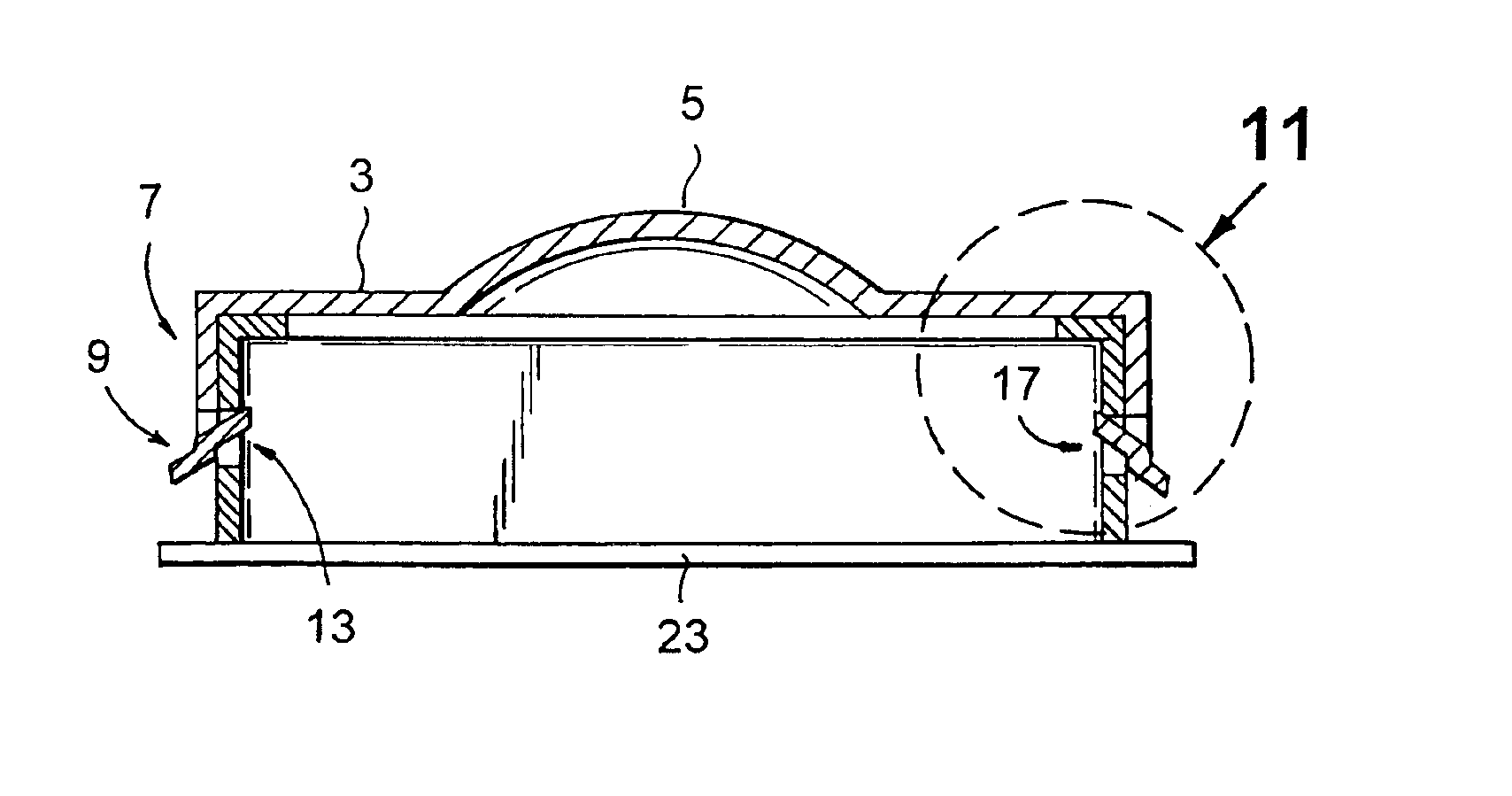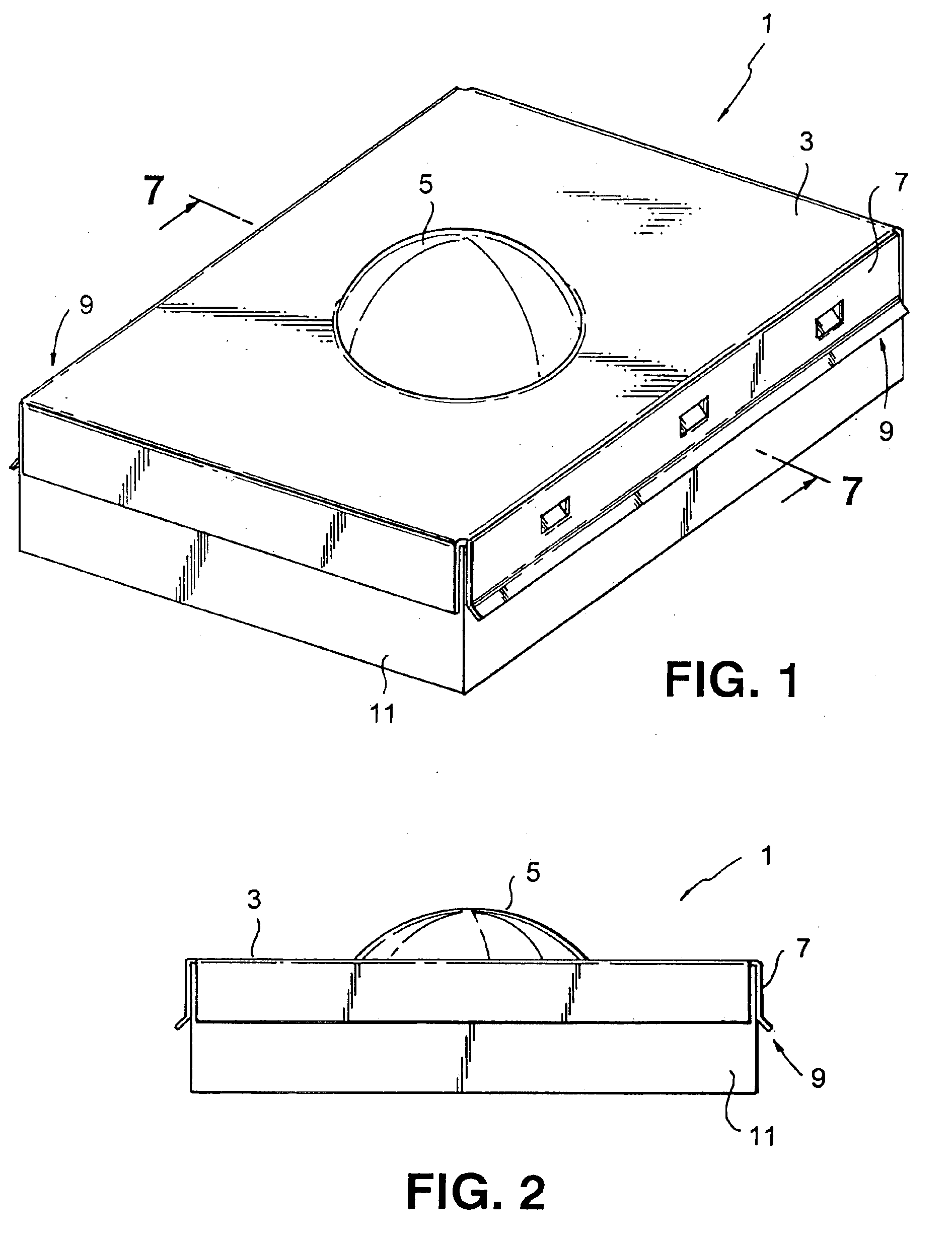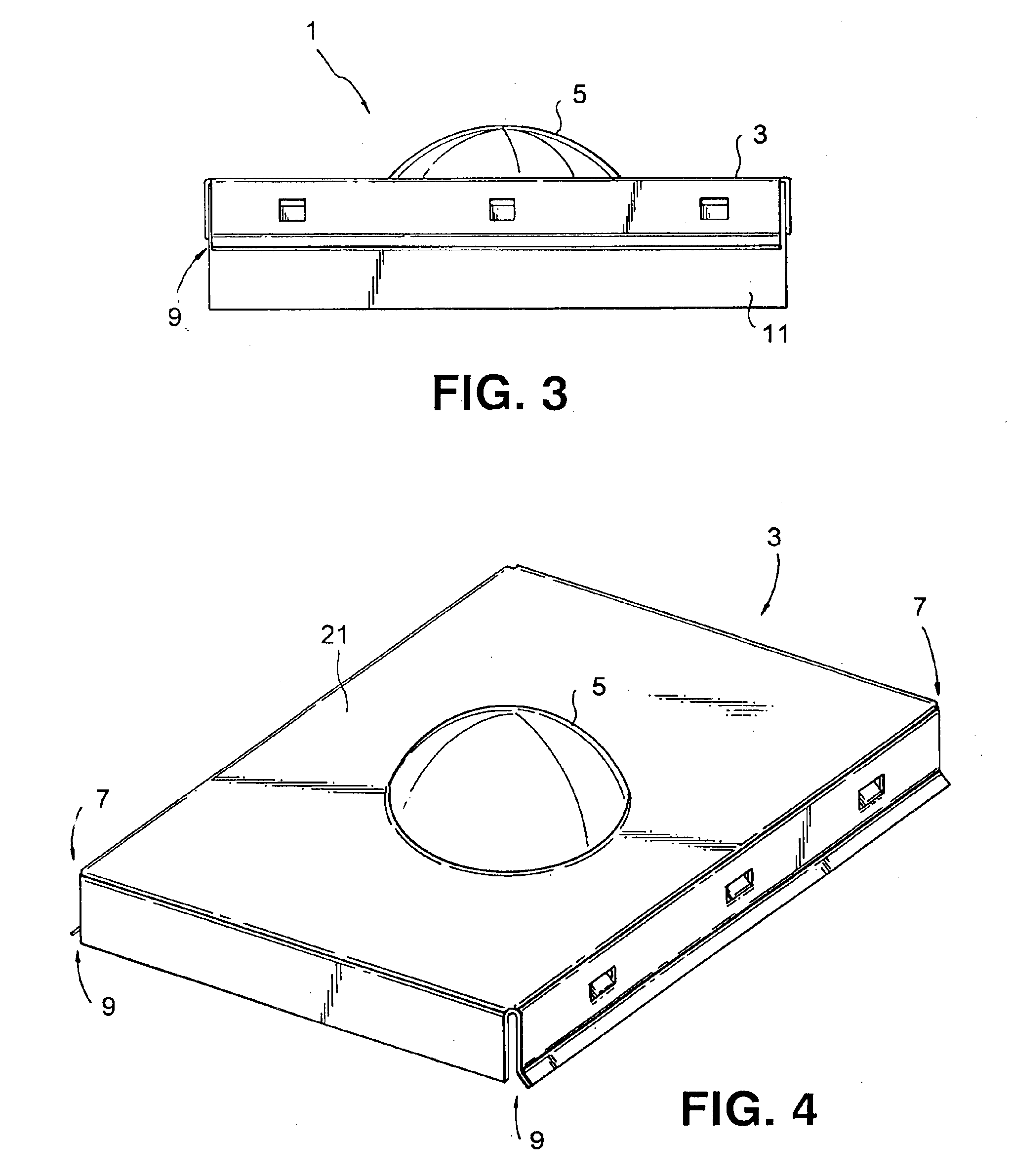Two-piece electrical RF shield and method of manufacturing the same
- Summary
- Abstract
- Description
- Claims
- Application Information
AI Technical Summary
Benefits of technology
Problems solved by technology
Method used
Image
Examples
Embodiment Construction
Referring now to the drawings, the present invention is directed to a two-piece RF interference shield illustrated, in perspective view, generally at 1 in FIG. 1. FIG. 1. shows an assembled RF shield 1 wherein the top portion 3 has been fitted to the bottom portion 11. FIGS. 2 and 3 show side views of the assembled RF shield 1. The RF shield 1 is manufactured according to conventional practices by stamping the RF shield 1 from a piece of metal using a die. After the assembly of electrical components on the PCB using conventional practices, the bottom portion 11 of the RF shield 1 is placed over the electrical components and soldered onto the PCB such that the components are within the cavity of the bottom portion 11.
In the preferred embodiment shown, the RF shield 1 is a two-piece design having both a bottom portion 11 and a top portion 3. The unassembled bottom portion 11 is illustrated, in perspective view, in FIG. 6. The unassembled top portion 3 is illustrated, in perspective vi...
PUM
 Login to View More
Login to View More Abstract
Description
Claims
Application Information
 Login to View More
Login to View More - R&D
- Intellectual Property
- Life Sciences
- Materials
- Tech Scout
- Unparalleled Data Quality
- Higher Quality Content
- 60% Fewer Hallucinations
Browse by: Latest US Patents, China's latest patents, Technical Efficacy Thesaurus, Application Domain, Technology Topic, Popular Technical Reports.
© 2025 PatSnap. All rights reserved.Legal|Privacy policy|Modern Slavery Act Transparency Statement|Sitemap|About US| Contact US: help@patsnap.com



